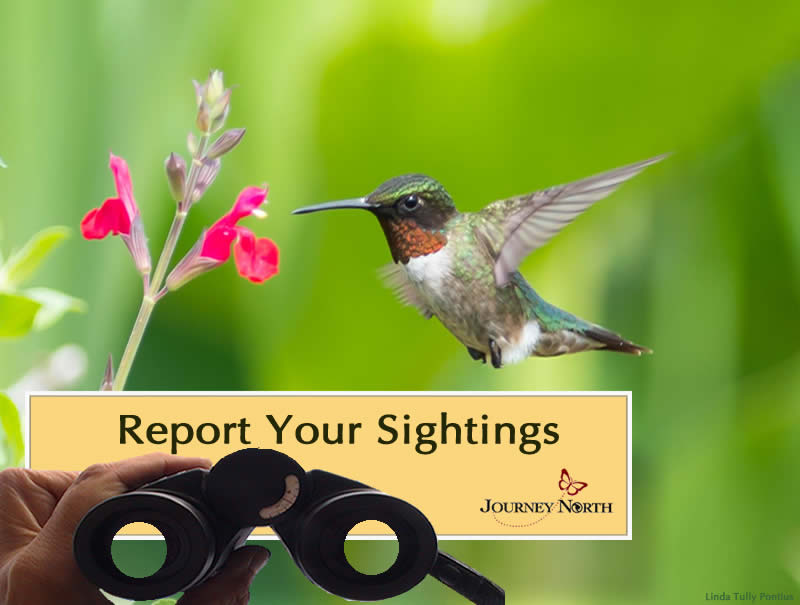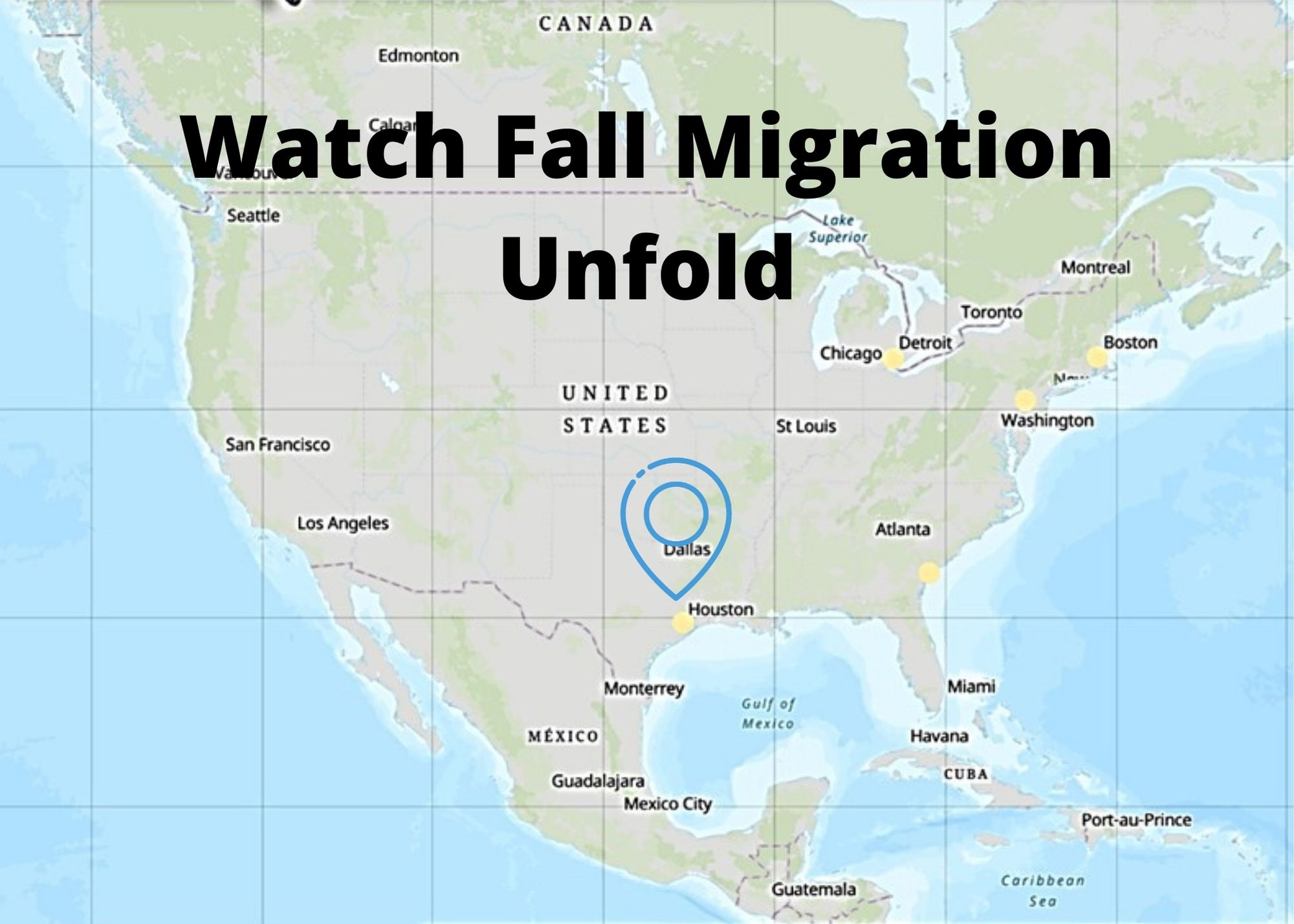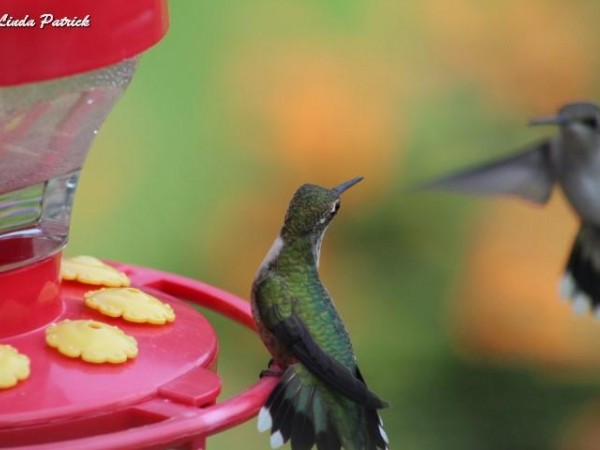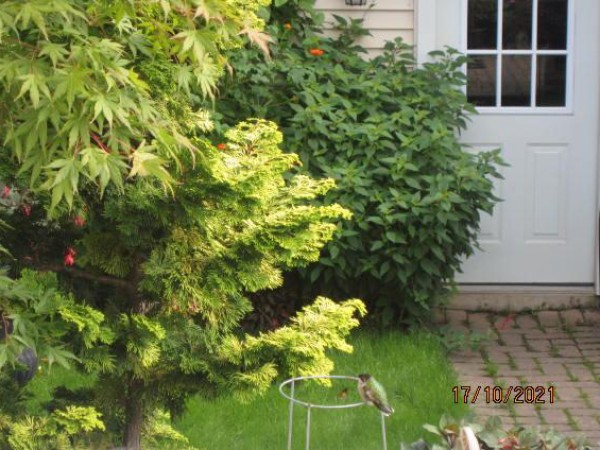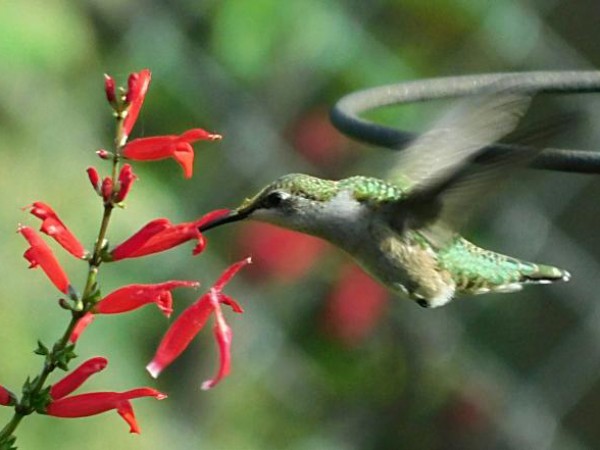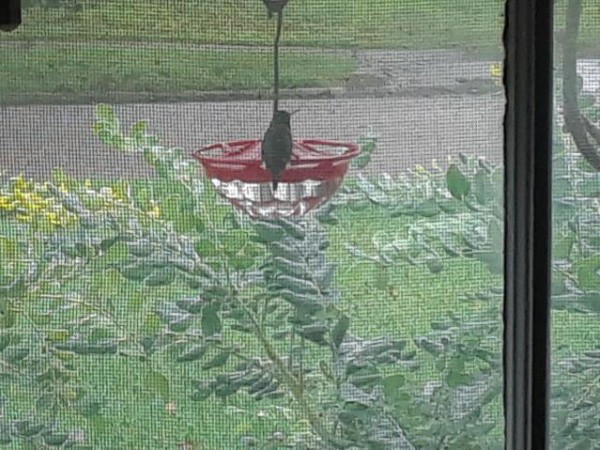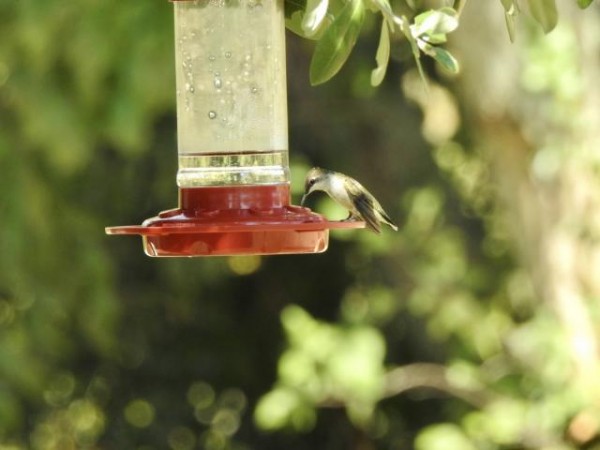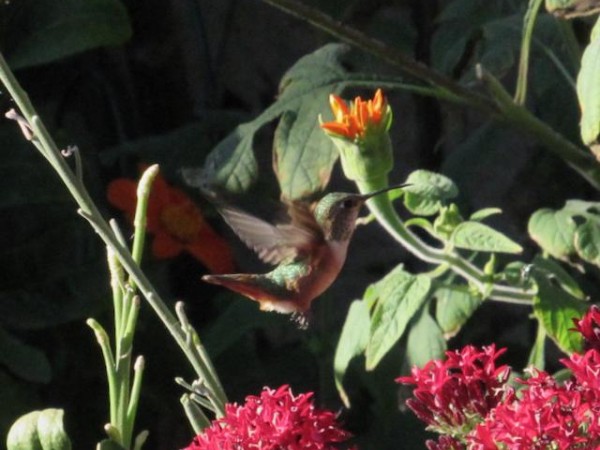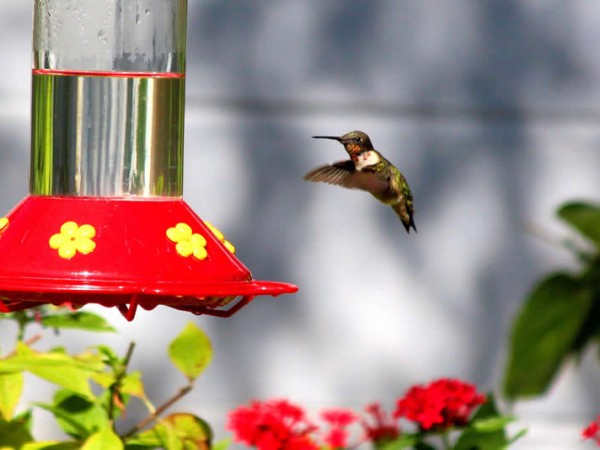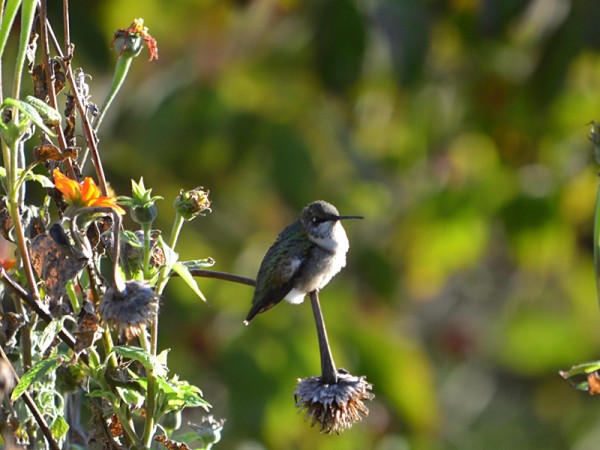En Route to Overwintering Grounds
Stragglers in Ontario
Journey North citizen scientists in southern Ontario are still reporting Ruby-throated Hummingbirds at feeders. Some hummingbirds are heading south while others are sticking it out for the time being. Cooling temperatures and shortening daylight should hasten these hummingbirds along their migration flyways. Explore our Hummingbird Sighting map to see how these late-season reports compare to previous years.
Linda in Chatham-Kent, ON: "We have had 2 hummers here for 10 days and saw them at the feeder for the last time at 7:30 a:m today. We are used to seeing them about every 10 minutes each day. So they must have decided to be on their way south. We wish them safe travels! Photo taken Oct 7th. Waystation #13039." (10/11/2021)
Judy in South Frontenac, ON: "I believe the hummer that showed up at the feeders on Sun., Oct. 10 may have left us this morning. Saw her twice on the front feeder early this morning and haven't seen her since. It has been a treat to see her the past 5 days!" (10/14/2021)
Gesine in Lincoln, ON: "The one in the photo came in on the 16th (Saturday around 11:30 a.m.) and is still here. He sits on that metal ring most of the day and has almost emptied the whole tube feeder nearby. The other was gone for a while today however, came back for a quick chase before eating a lot of bugs drinking nectar and then went into the Tulip Tree for the night. They are both very plump and healthy looking birds." (10/17/2021)
Still Coming Through the Midwest and Northeast
While numbers are dropping in the Midwest and Northeast, late travelers are still passing through. As Journey North citizen scientists can attest, it's important to keep feeders up even after your last sighting – stragglers may yet stop by!
Isla in Hancock, NH: "At at feeder in my garden. I guess they're still coming down from north of us." (10/14/2021)
Janet in Mattoon, IL: "Glad feeders still up. Saw him 10/14/21 at 5 pm. And again this morning at 8 am." (10/15/2021)
Steady Activity Farther South
Throughout the South Central and Southeastern U.S., migratory activity is steady and even increasing in certain areas. Most adult males are gone, but some reports are popping up along the Gulf Coast.
Kathy in Morris Chapel, TN: "I have approximately 10 Ruby-Throats. My last adult male left on 10/07." (10/11/2021)
Beverly in Houston, TX: "Adult male Ruby-throat never took off like I thought. Sighted today after tropical rain stopped at 4 p.m. on feeder hung in blooming yellow Sophora bushes . . . Other 4 sub-adult males still here also now chasing around sometimes after going to Rocking deep purple salvia, purple Gurantica Aimstead, Hamelia." (10/14/2021)
Vivian in Desdemona, TX: "There are at least 3 hummingbirds here now, possibly 4. I believe they are juvenile ruby-throats. I watched one gleaning insects in a tree today. Several came to feeders during a fairly heavy rain yesterday, which I find interesting." (10/14/2021)
Jennifer in Grand Cane, LA: "Sitting on my front porch this morning and I’m suddenly seeing about a dozen hummingbirds. I normally have around 4-5, so the increase is marked. They seemed to come right at sunrise, almost in a swarm. Beautiful." (10/16/2021)
Sophie in Kernersville, NC: "Travelers, most likely juveniles, continuing to come through daily. The one that visited yesterday afternoon through evening fueled up this morning." (10/16/2021)
Out West
At higher elevations in Colorado and Oregon, Journey North citizen scientists are reporting Black-chinned and Anna's Hummingbirds. In more mild locations such as Central California, some Anna's Hummingbirds will stay the whole winter. More will likely arrive as wildfires in the region clear out.
Susan in Loveland, CO: "The latest hummingbird sightings we've had here. There were two at one time on 9/19/21 and I thought that was the end. Then I saw one on 10/6/21, 10/9/21, and 10/10/21. I don't know if it was the same hummingbird or different ones. This photo is from 10/9/21. We had hoards of black-chinned hummingbirds this year so I would assume it was a juvenile black-chinned." (10/10/2021)
Mary in Summer Lake, OR: "One female Anna's hummingbird still here this morning at feeder, in spite of a hard freeze last night that killed most of the flowers she's been feeding on." (10/12/2021)
Tom in Hanford, CA: "Still have 4 Adult male Anna’s. A few juveniles and no females. No Black-Chins. I always have a few stay behind and winter over since it normally mild weather in Central California. Didn’t have as many since I’m located only 60 miles from Sequoia National park with all the fires and smoke and some days the air quality was in the hazardous zone with ratings as high as 500. Thank goodness for cooler weather and cleaner air. All of us can breathe again." (10/12/2021)
Patricia in Oxnard, CA: "The red sage and red pentas are in full bloom. Our Anna's hummingbird doesn't get a moments rest defending his territory." (10/16/2021)
Keep Reporting and Keep Feeders Up
If you’re still observing hummingbird activity, keep reporting to Journey North. And remember to keep your feeders up at least a couple weeks after your last sighting. With fewer flowers in bloom this late in the season, stragglers need feeders as reliable sources of food. Don’t be concerned: feeders will not cause hummingbirds to stay longer than they should.


